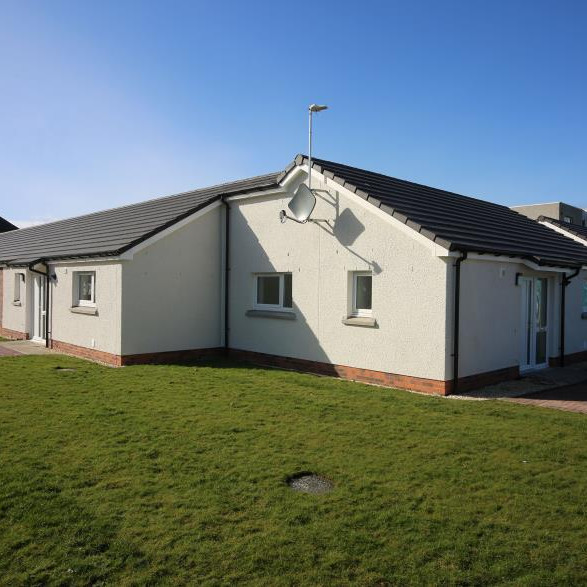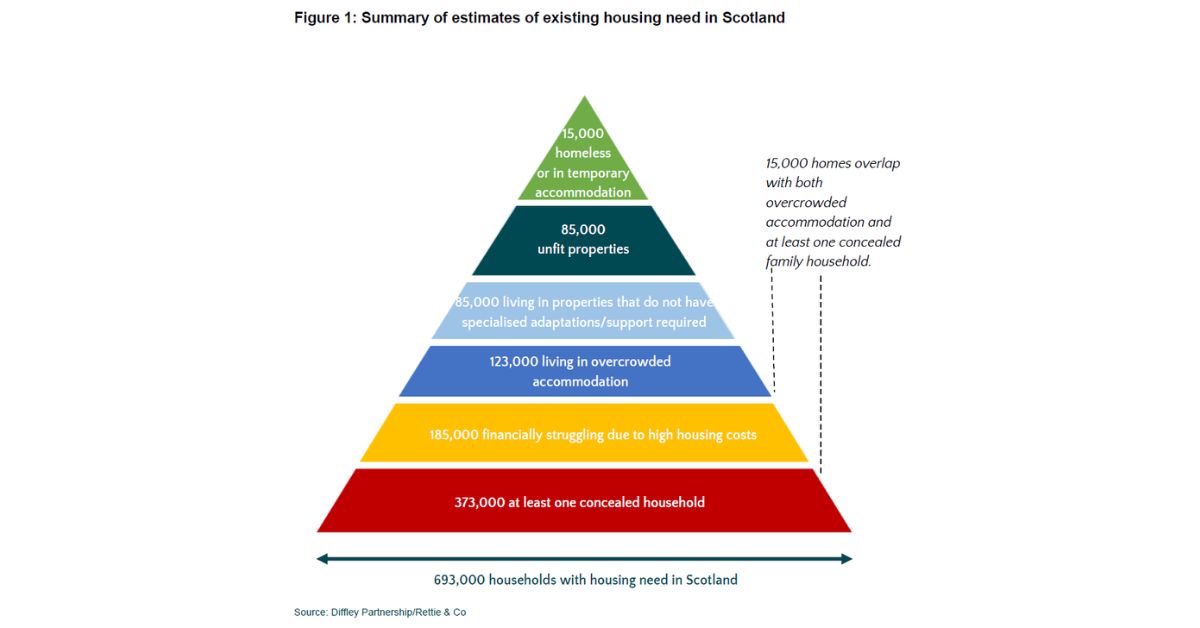More than a quarter of Scotland’s households in housing need

A comprehensive survey into the housing needs of the population has found that more than a quarter (28%) of households in Scotland do not live in accommodation that adequately meets their needs.
The stark figure - equivalent to 693,000 households – comes following a report commissioned by housebuilder body Homes for Scotland (HFS) and carried out by The Diffley Partnership and Rettie & Co.
It finds that estimates of housing need to date, calculated through the Scottish Government’s Housing Need and Demand Assessment (HNDA) tool, have significantly underestimated how many households are facing housing hardship. According to HFS, one of the issues this has led to is the insufficient allocation of land for social, affordable and private house building, which has further exacerbated the housing crisis.
The report follows declarations of housing emergencies by City of Edinburgh Council, Glasgow City Council and Argyll & Bute last year.
The ‘Existing Housing Need in Scotland’ report includes the findings of a survey of 13,690 people across Scotland. It found that an alarming number of households are not being counted in official figures as being in housing need.
This includes those living in unfit properties, overcrowded accommodation and homes requiring specialist adaptations as well as households that are concealed or struggling financially as a direct result of high housing costs.
According to HFS, as the HNDA tool only includes those in acute need (namely homeless households in temporary accommodation and overcrowded households that have at least one concealed family), the Scottish Government and local authorities are underestimating the true extent of Scotland’s housing need.
HFS chief executive Jane Wood said: “Adequate housing is a human right, but today more than a quarter of households in Scotland are in one or more forms of housing need. There is simply no excuse for Scotland to continue on this path. By utilising data to inform policies, and with public and private sectors working collaboratively and intelligently together, we have the opportunity to recognise the true extent of housing need in Scotland and to build the homes of all tenures that we need in adequate numbers and in the right places.
“We need to create an inclusive and agile housing system, one that meets the needs of all those living in Scotland and which can cope with additional demand caused by unexpected events such as those seeking refuge from war.

“As this comprehensive report demonstrates, the level of housing need far exceeds the current calculations used to determine where and how many homes need to be built in Scotland. It provides local authorities and the Scottish Government with an easy and robust data tool to help them understand true housing need at local and national levels.
“It is our hope that, in our shared endeavour to end the housing crisis, this data will be welcomed and used by the Scottish Government, local authorities and other stakeholders to ensure that our housing needs are properly met.”
Dr John Boyle of Rettie & Co analysed the survey results and was the lead author of the report. He said: “Accurate data is key to addressing the housing crisis. Several solutions will be required to resolve the wider need that has been identified, such as bringing empty homes back into use, but it is clear that the building of new homes must play a significant part. As such, sufficient land must be allocated in Local Development Plans for much needed homes of all tenures.
“Scotland’s chronic undersupply of housing has already had a drastic and far-reaching impact on its economic and social development. If we don’t get this sorted, the consequences across a broad range of national outcomes - from health to education to wellbeing - will be severe.”
The Scottish Government estimates that c.15,000 households are in homeless temporary accommodation and a further 15,000 are in overcrowded accommodation with at least one concealed family.
According to the report, a significantly higher number of households in Scotland should be counted as being in housing need. The poll found:
- 14.9% had at least one concealed household – this is equivalent to 373,000 households. A concealed household is defined as an individual or group wishing to move to form their own household but unable to do so.
- 7.5% of households in Scotland say they are struggling financially due to high housing costs – equivalent to 185,000 households living in properties that they are struggling to afford.
- 4.9% were found to be living in overcrowded accommodation – equivalent to 123,000 households.
- 3.4% were in properties that required specialised housing adaptation or support. This is equivalent to 85,000 households living in properties that are unsuitable due to specific needs. For example, disabled access.
- 3.4% of people in Scotland were found to live in ‘unfit’ properties – equivalent to 85,000 households living in “very poor conditions”.
The final figure of 693,000 in housing need in Scotland takes account of overlapping need across these categories and also includes the 15,000 households in temporary accommodation.
Jane Wood concluded: “Home builders of all tenures are committed to playing a critical role in providing the housing that Scotland needs and creating a thriving society and economy but cannot do this in isolation. We look forward to working with housing stakeholders across the spectrum to achieve this.”









